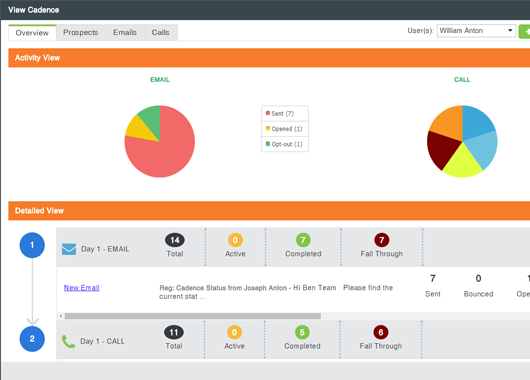4 min read
Avoid Sales Burnout: Lessons Learned from Death of a Salesman
Arthur Miller's 1949 play ‘“Death of a Salesman” is about what happens when a salesman, Willy Loman, fails to accept...

Research performed by CSO Insights found that sales representativess are failing to meet quota at alarmingly high rates. Global B2B quota attainment was a mere 53% in 2016, dropping ten percent over five years. That means that only one in two of sales reps are likely to meet quota this year with only a small percentage entering Q4 confident that they will reach quota.
“It is no easier to attain quota now than it was five years ago. In fact, it’s harder,” wrote CSO Insights. “Despite the new tools, the mobile devices, the potential of social, and so on, many salespeople are working harder than ever just to achieve the same old results or worse.”
Learn the definition of sales engagement and how to improve it. Read this blog.
B2B firms need to look at B2B sales productivity strategically. Simply amping up the pressure on sales reps isn’t going to reverse a five-year secular trend across industries and countries. It’s not that sales teams need to work harder, but smarter. Sales productivity is about deploying information, processes, and tools, which both remove inefficiencies and make sales reps more effective at selling.
How to Think about Sales Productivity
Efficiency: The More is Better Trap
There are two ways to approach sales rep productivity: increase efficiency or increase efficacy. Efficiency focuses on quantitative metrics such as how many calls were made, how many first appointments set, and how many opportunities progressed to each stage of the pipeline. While these sales productivity metrics help provide gauges of efficiency, focusing too much on any metric may be counterproductive. For example, placing a bounty on first appointments may result in a high percentage of poorly qualified meetings that waste everybody’s time. The goal shouldn’t be more appointments, but appointments with good prospects.
In the end, sustainable revenue is the only metric that matters. All other metrics are simply guideposts towards achieving revenue growth.
I’m not recommending that we stop paying attention to these mid-stage metrics. They remain valuable for monitoring pipeline health and determining where there are process problems. Business Management Theorist Peter Drucker was right when he said, “If you can’t measure it, you can’t improve it.” But, simply because something can be easily measured doesn’t make it an end in itself.
The drive for efficiency should focus on reducing wasted effort across a broad set of sales activities. For example, Personal and Team Dialers allow sales reps to place more calls within a short period of time by queueing up calls. They also support voicemail drops of pre-recorded messages, capture call dispositions, and record activities to the CRM.
Efficacy and Selling Better
Efficacy looks at whether our sales efforts are effective. It is a bit more difficult to measure, but employing an efficacy view helps prevent an overreliance on interim metrics. Well-designed processes find a balance between volume and quality. Efficiency asks simply, “how do we get more?” But an efficiency- only focus may result in high volume, low quality customer interactions.
Efficacy asks
Answering these questions requires feedback loops, analytics, A/B testing, customer research, and alignment between sales and marketing.
Lead Scoring and Enrichment
In addition to emphasizing volume, we should focus on being more effective in our sales efforts. A key area for improvement is in lead scoring. If sales reps can better prioritize their activities, they can greatly improve their targeting, timing, and messaging. ConnectLeader’s Adaptalytics lead enrichment and scoring combines market insights from leading vendors such as Bombora (Intent) and Zoominfo (Contacts). It also factors in Best Time to Call and contactability to drive outbound sales activity.
Enriching leads drives both efficiency and efficacy. Efficiency benefits come when reps
Efficacy is also improved via better targeting and messaging. For example, intent data identifies companies with a spike in online research around key topics. This spike signals that the prospect is likely to be entering a buying cycle around a specific technology. The key is the surge above baseline for the company. IBM will likely have higher baselines for most topics than a 100-person firm, so it is the positive deviation from historic interest levels that signals intent.
Efficacy is also about training and guiding new sales reps. Recorded calls help new or junior sales reps review recent calls with managers. Calls can be analyzed for positioning, objection handling, and setting next-steps. Sales efficacy and training also improve when managers listen in on calls and whisper advice to sales reps.
When cadences are employed, both efficiency (no longer having to track follow up tasks, no longer having to write emails from scratch) and efficacy (tested multi-channel messages sent on an optimized schedule) improve. Cadences provide a scheduled outbound roadmap that integrate voice, email, and social activities over a multi-week period. Platform analytics help identify the most effective cadences and email templates, helping to improve productivity and increase revenue.
That only half of B2B sales reps make quota is worrisome. It’s not that half of sales reps are weak performers, but that selling has become a complex, multi-stage process of convincing large, informed buying teams to purchase our products. To meet this challenge, we need to provide sales reps with tools for prioritizing their activities, sharpening their messaging, and managing their outbound communications. More time should be spent communicating with strong prospects and less on non-sales activities or engaging weak prospects.
Sep 6, 2017 by admin
Arthur Miller's 1949 play ‘“Death of a Salesman” is about what happens when a salesman, Willy Loman, fails to accept...
Aug 15, 2023 by Koncert Marketing
Simply put, AI powered parallel dialing is using asoftwareapplication to make multiple...
Aug 6, 2020 by Joe Cronin
If you manage a B2B sales team, you are engaged in some sort of sales outreach. But what exactly is sales outreach?...